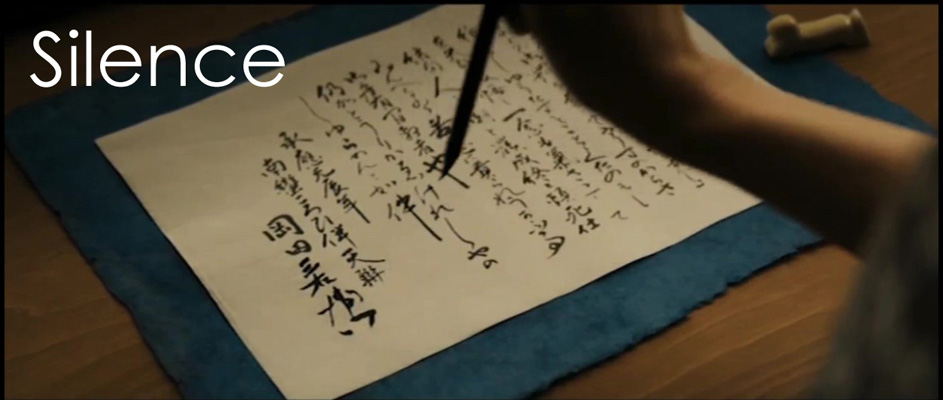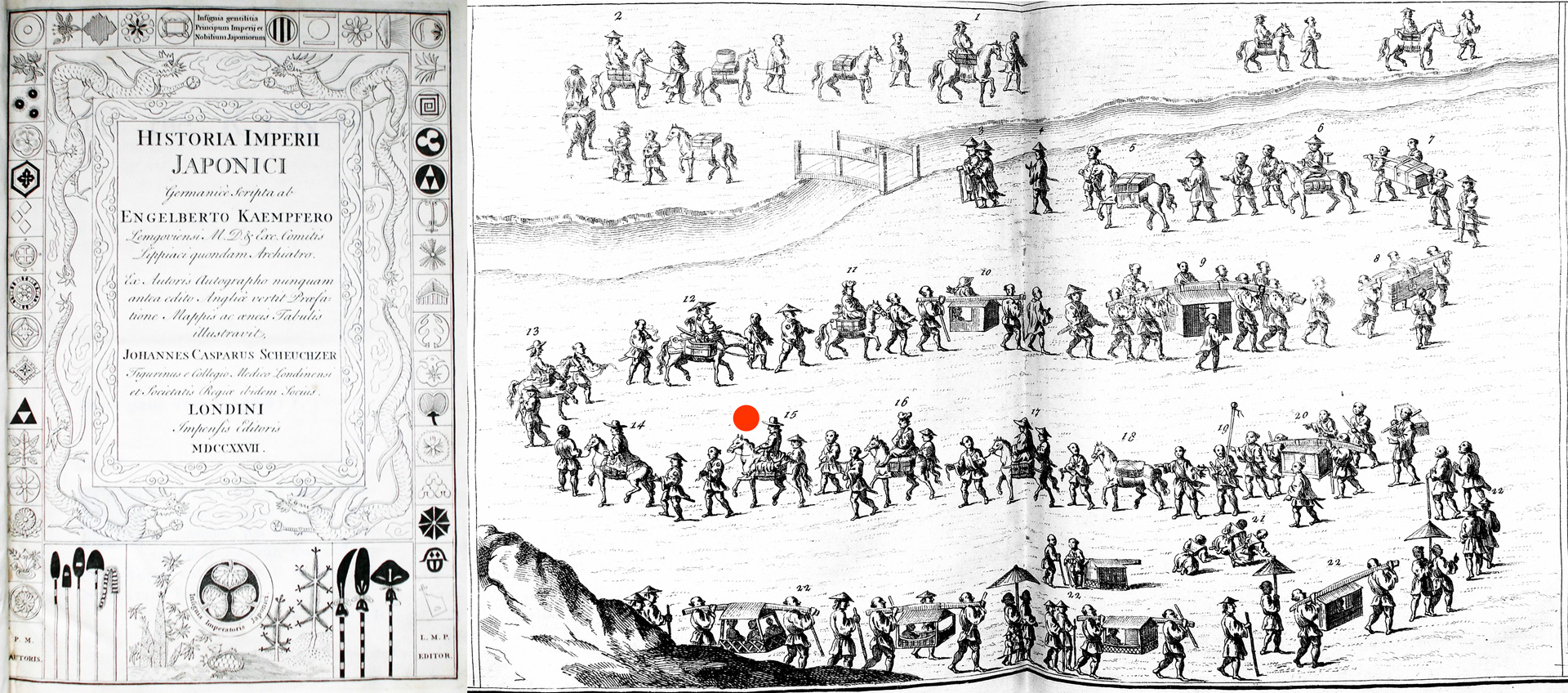
Scenes
Silence 2016

Silence 2016
Titel: Silence
Published: 2016
Length: 155 minutes
Staff
Director: Martin Scorsese
Script: Martin Scorsese, Jay Cocks. Following the novel of Shosaku Endo "Chinmoku" (silence) from 1966
Music: Kim Allen Kluge, Katherine Kluge
Cast
Andrew Garfield: Pater Sebastião Rodrigues
Adam Driver: Pater Francisco Garupe
Issey Ogata: Inquisitor Inoue Masashige
Tadanobu Asano: Interpreter
Ciarán Hinds: Padre Alessandro Valignano
Liam Neeson: Padre Cristóvão Ferreira
Shin’ya Tsukamoto: Mokichi
Yoshi Oida: Ichizo
Yōsuke Kubozuka: Kichijiro
Nana Komatsu: Mónica (Haru)
1638 in Portugal. The two young Jesuits Rodrigues and Garupe travel to Japan together to find Rodrigue's former mentor, the prominent Jesuit Cristóvão Ferreira. According to rumors, Ferreira is said to have succumbed to apostasy.
Her path first leads them to the Portuguese colony of Macau. They get to know the Japanese Kichijiro and with his help they secretly sail to Japan. There they are received by an underground Christian community and hidden in the village of Tomogi.
In Tomogi, the inquisitors have arrested several villagers and are demanding either the death of four converts or the extradition of the Jesuits. Finally, three villagers are tied to wooden crosses on the seashore and killed by the tide. Rodrigues and Garupe decide to leave Japan on separate routes.
Rodrigues chooses the route across the mainland, away from the villages. Eventually he meets Kichijiro again, but is betrayed by him to the inquisitor Inoue and arrested. Rodrigues and other Christian converts are taken to a prison in Nagasaki.
Inoue is of the opinion that Christianity does not match to Japan. He sees fighting it as an unpleasant but necessary task. As a sign of turning away from the Christian faith, he askes converts to step on a picture of Jesus.
Rodrigues finally meets Ferreira, who now lives under a Japanese name in a Buddhist monastery. Ferreira has denied Christianity and teaches the Buddhists in astronomy. He is also writing a book in which he shows the mistakes of Christianity. Rodrigues despises him for that.
The converts who are still alive are subjected to special torture. As a condition for her pardon, Inoue demands that Rodrigues renounces Christianity and also steps on the image of Jesus. Ferreira also talks to him. Rodrigues initially refuses, but then has a vision in which Jesus says, he can do this. Rodrigues stamps on the picture and the converts are pardoned.
Rodrigues adopts a Japanese name. It is now his and Ferreira's task to check the Dutch trade goods for Christian symbols. Rodrigues regularly has to testify in writing that he is no longer a Christian. He is assigned a Japanese wife and the name of her late husband. Rodrigues dies after many years and is buried according to Buddhist custom. His widow slips the body a crucifix before it is cremated (an idea by Scorsese and different from the novel).
Japan was initially relatively open to new religious currents under the then ruler Toyotomi Hideyoshi (1537-1598). The Portuguese, who had been granted the "use" of Japan by the Pope in the Treaty of Tordesillas in 1494, engaged in brisk trade and the Jesuits made themselves indispensable as translators.
The founder of the Jesuit mission, Francisco de Xavier, had already visited Japan in 1549 and established the first mission schools in Yamaguchi (West Honshū). He said that he did not find a people "among the Gentiles" who were more accessible to Christianity than the Japanese.
Above all, many ordinary Japanese were peacefully converted to Christianity, since Christians, regardless of social class, were offered the prospect of ascending to heaven. That was a revolution in the strict class system of Japan, in which the peasants in particular had hardly any rights. Some high-ranking feudal lords (daimyō) also adopted the Christian faith, which nevertheless remained a religion of the lower classes of the population.
A large part of the Japanese feudal lords remained suspicious of Christianity, as the recognition of the church as the highest authority was seen as an attack on the previous Japanese order of power. This mistrust was fueled by the English navigator William Adams, who was stranded in Japan.
Adams, who, as an Englishman and Protestant, regarded Catholic Portugal as a hostile country, explained to Tokugawa Ieyasu, the later sole ruler of Japan, that Portugal had already used Christianity in the past to incite the inhabitants of foreign countries against one another with the aim to control these countries completely. Tokugawa responded by closing Japan, which was initially directed primarily against the Spanish and Portuguese. Only members of the Dutch East India Company were allowed to stay on a small, strictly sealed off island. The Dutch were only interested in trade and had no ambition to jeopardize their lucrative business by attempting to convert people or interfering in Japanese politics. After the Shimabara uprising (1637-1638), which was led by Christians, Christianity was also banned.
Christians had to convert back or were killed. To track down Christians, armed troops marched through the country, forcing all the inhabitants of a village stepping on an image of the Virgin Mary, which Catholic Christians considered sacrilege. Tens of thousands of converts were killed in a short space of time and the remainder driven underground. These "Kakure Kirishitan" could only practice their religion in secret. If discovered by the authorities, the entire family could be executed. Nevertheless, Christianity remained alive in small enclaves, with a modified liturgy and own prayers developing over the years.
The film takes finally started in April 2013 after 23 years of preparatory work.
The premiere took place on November 29, 2016 in Vatican City. Scorsese was received by Pope Francis. Scorsese invited around 300 members of the Jesuit order to the premiere.
The film cost $ 46 million and grossed $ 23 million. For the American market, the story is of no interest; no American appears in the film. The questions of faith with which the Jesuits grapple are also of little interest to non-Catholics.
While for some the film shows the absurdity of Christian proselytizing in Japan, for others it shows the compassionate Christ, who can even be denied in order to save people.
Silence closely follows the novel Chinmoku (1966) by the Japanese author Endō Shūsaku (1923-1966). This novel was made into a film for the first time by Mashiro Shinoda in 1971. The novel describes historical events. Father Ferreira lived from 1580 to 1650 and renounced his Christian faith after being tortured in Japan. The figure of Rodrigues is based on the person of the Italian Jesuit Giuseppe Chiara, who worked in Japan.
Further information on missionary work in Japan can be found at the sites of Bernhard Scheid from the Universität Wien.
The rapporteur Dieter Albrecht at the end of the film is based on the German Engelbert Kaempfer from Lemgo, who from 1683 to 1693, as an employee of the Dutch East India Company, undertook a research trip across Russia and Persia to India, Java, Siam and finally Japan. He gained a lot of knowledge about geography, nature, society, religion, politics, administration as well as the sciences and arts of the regions visited. His writings are considered to be important contributions to early modern exploration of the countries of Asia. They also shaped the European image of Japan in the 18th century and served many explorers as a reference work until the early 19th century.
The illustration shows Kaempfer's book about Japan and the procession of the Dutch from Dejima, which once a year led them from Nagasaki to Edo to the Shogun. Person no. 15 is Engelbert Kaempfer.

According to Kaempfer's own words, he has "brought nothing into his work that was created out of my own imagination, nothing that tastes of the office or smells of the study lamp. I limit myself to writing only what is either new or not thoroughly and completely from others. As an explorer, I had no other aim than to collect observations of things that are nowhere or not sufficiently known to us. " The 900-page work is aimed at the European scholarly world and consists of five books: the greater part is dedicated to Persia, the rest relates to Japan.
Kaempfer's treatise on the Japanese "closing policy", which was first published in the Amoemitates Exoticae and widely distributed in the appendix to the History of Japan and the following editions, caused a sensation. His image of a frugal, hard-working society living harmoniously together under the strict rule of the emperor (Shogun), which withdrew from the world for their protection, shaped the European image of Japan well beyond the 18th century. When translating the Dutch version of this essay, the Japanese interpreter Shizuki Tadao - because of the complexity of the long Kaempfer's expression - coined the new term SAKOKU (鎖国, closed country), which would become a key term in Japanese historiography of the 20th century.